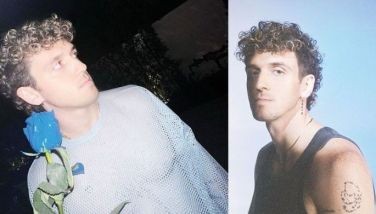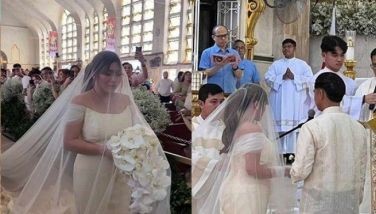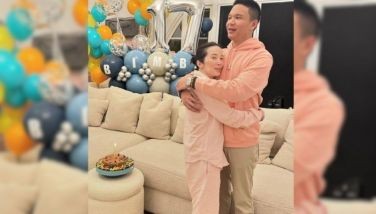Rurouni Kenshin director discusses Legend Ends
MANILA, Philippines - Before finding fame and success with the Rurouni Kenshin film franchise, recent Manila-visitor director Keishi Otomo paid his dues studying scriptwriting and directing in Los Angeles. On his return to Japan, he directed a series of NHK TV programs from 2001 to 2010, receiving multiple awards for some of them — including an International Drama Festival in Tokyo Award for Best Drama, the Nikkei Hitmaker of the Year prize, and a Director’s Award from the Hoso Bunka Foundation.
Leaving NHK in 2011, he established himself as an independent director with the 2012 smash hit Rurouni Kenshin following this with Platinum Data in 2013. Also last year, NHK Publishing released his book How to Fight Creatively.
Now, Otomo-san returns to continue and conclude the Rurouni Kenshin saga with its two-part sequels, Kyoto Inferno and The Legend Ends, which opens this Sept. 24. Find out what the director’s thoughts about the sequels in the following interview.
While Rurouni Kenshin is an action movie, it also appeals as a human drama. Is this intentional?
“A script is kind of like a mathematical formula. Into this world of mathematical logic are placed actors — the kind of actors I like, anyway — who won’t be persuaded, unless it has a sense of body, unless there’s some skin in the game. That’s because we want to transform what was a very successful original manga story. Things that don’t happen on the page — people sweat, they sweat when they move, they get out of breath, their hair gets all messed up — what happens as a result of that? How do we get that kind of atmosphere into the movies? We give it shape, not by imagining the characters in our heads, but by understanding the characters as they do battle. What we’re trying to do is make a movie out of flesh and blood. The most important thing is that all of the characters express themselves through the battles they find themselves in.
The story doesn’t seem episodic, everything seems to surge on that great stage of the Kyoto fire.
“After the first movie, we knew we could go ‘this far,’ and it was very much in our minds at the script-writing stage for these films that the action and the drama would emerge with the same intensity. And that’s hard to do. When you’re shooting action, you’re basically shooting motion. When you’re shooting drama, you’re basically shooting emotion. But in motion there is emotion. You have to find it, and join motion and emotion into one, and film it with the sense of the feeling and the expression uppermost in mind. That’s a pretty high hurdle to get over. With the first movie, our motto was ‘do the impossible’; this time it was ‘overdo the impossible’ (laughs). Anyway, I want to see the real thing. OK, so what is the real thing? It means that everything on the screen is great, and you push that as far as it will go. Everybody, the entire cast and staff, kept that feeling all the way through. That energy, I think, is what really surges.
And Takeru Satoh really pulls everything together.
“There are roles that mark a turning point in an actor’s career. The encounter of Takeru Satoh and Kenshin was an encounter of very rare timing. A miracle among miracles, I think. He’d played an assassin in Ryomaden, and the extension of that line intersected with my going independent. For Takeru, it was a once-in-a-lifetime role. A lot of things had to be perfectly timed for that to happen. I think that’s always very important in things like stories or movies. And strangely, that background always comes out somehow in the picture.
So will The Legend Ends surge the same as Kyoto Inferno?
“No, we’ve made that one a little different. I think it has to be different from both the first film and Kyoto Inferno. The Legend Ends starts quietly. Things happen that are off the main axis. The situation evolves with Kenshin not there. How will Kenshin return to do battle with Shishio? Perhaps he has another card up his sleeve. But the theme of Kenshin’s atonement for the many people he’s killed does not change. A man who lives in atonement, and a man who does not, must inevitably do battle. That fateful battle — somewhere there are people waiting expectantly for Kenshin and Shishio to climb into the ring together — that ‘cannibalism’ is the structure I’m thinking of. Maybe someone is using some kind of dynamic to make the two of them fight. To that end I want to inject a little bit of ‘poison’. I want Kenshin to be falling apart. All the fighters get hurt and fall to pieces. Why are these guys fighting? If that question doesn’t rise up within us, the theme of the killer’s atonement doesn’t emerge. People tend to think that ‘entertainment’ means stripping away the fat and the complications, but I don’t think that’s true. I don’t want to fix on turning points in the story; I want to fix on turning points in the lives of the characters. Kenshin doesn’t face Shishio as a straight-down-the-line champion of justice. He gets confused; his certainties are shaken. When you’ve finished watching The Legend Ends, what’s left? Something heavy, I hope.”
Rurouni Kenshin is distributed by Warner Bros. Pictures.
- Latest
- Trending

























 Exclusive
Exclusive






